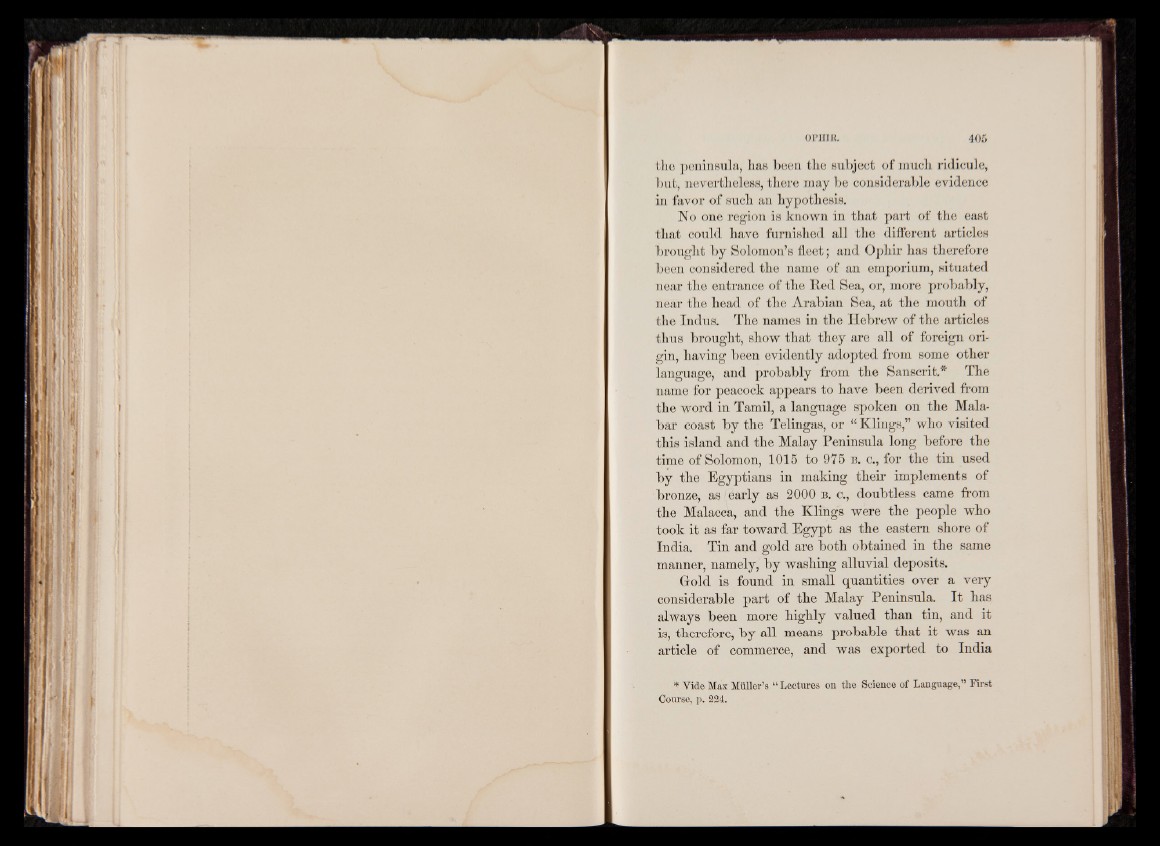
In i
1
I V
II I;
I
HIE
if I > II
the peninsula, has been the subject of much ridicule,
but, nevertheless, there may be considerable evidence
in favor of such an hypothesis.
No one region is known in that part of the east
that could have furnished all the different articles
brought by Solomon’s fleet; and Ophir has therefore
been considered the name of an emporium, situated
near the entrance of the Red Sea, or, more probably,
near the head of the Arabian Sea, at the mouth of
the Indus. The names in the Hebrew of the articles
thus brought, show that they are all of foreign origin,
having been evidently adopted from some other
language, and probably from the Sanscrit.* The
name for peacock appears to have been derived from
the word in Tamil, a language spoken on the Malabar
coast by the Telingas, or “ Klings,” who visited
this island and the Malay Peninsula long before the
time of Solomon, 1015 to 975 b . c ., for the tin used
by the Egyptians in making their implements of
bronze, as early as 2000 b . c ., doubtless came from
the Malacca, and the Klings were the people who
took it as far toward Egypt as the eastern shore of
India. Tin and gold are both obtained in the same
manner, namely, by washing alluvial deposits.
Gold is found in small quantities over a very
considerable part of the Malay Peninsula. I t has
always been more highly valued than tin, and it
is, therefore, by all means probable that it was an
article of commerce, and was exported to India
* Yide Max Muller’s “ Lectures on tlie Science of Language,” First
Course, p. 224.